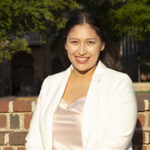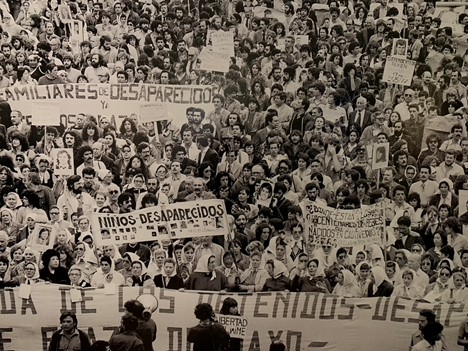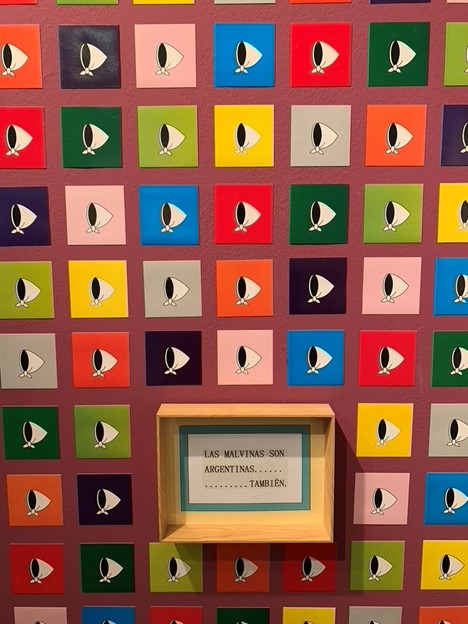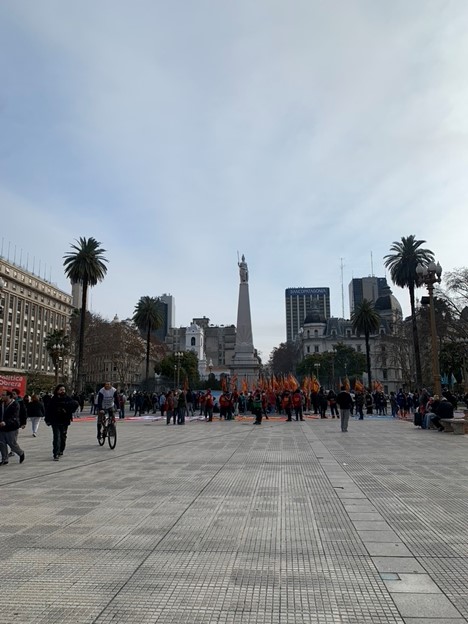
The last two weeks taught me that the CPM’s Committee Against Torture is a vital mechanism in enacting change within a static and unjust prison system.


During the fifth week, I accompanied the inspections and complex cases teams to different penitentiary units to conduct interviews. The first penitentiary unit I visited, with the inspections team, was UP 28 in Magdalena. There, we conducted interviews in SAC (solitary confinement), pavilion 4 (the worker’s pavilion), and the holding cell also known as the “leonera” or lion’s cell. SAC is grossly known as “buzones” or the mailbox. The reason behind this name is that the cell door has a slot at the bottom that allows the SPB to give the detainees food and medicine. In SAC, I assisted the director of the Committee Against Torture in interviewing four inmates who were suffering from a series of life-threatening and communicable diseases. The detainee who had been in SAC the longest had not left his cell in over a month, nor did he have access to the patio or the showers. When I was leaving SAC, I noticed the detainees throwing items such as sugar and yerba mate through the slots in the cell. I found this peculiar because they devised a contraption known as “the paloma” (the dove) built out of tied rags. This device was a symbol of survival within SAC. In the worker’s pavilion, detainees seemed to be “better off” and had greater access to amenities such as the showers and kitchen area. Here, we interviewed detainees who largely needed contact with their counsel. In the lion’s cage, three detainees were being processed while living in conditions of squalor. The holding cell was dimly lit, there were oranges (the detainees’ food) on the floor, and cardboard boxes for them to sleep on.
The most unpleasant encounter I experienced during this inspection was the interaction between the director of inspections and one of the penitentiary unit’s nurses in the health wing. Throughout our encounter with the nurse, I witnessed the corruption within the unit’s health system. There was blatant mismanagement of records that led to the detainees going without necessary medication and medical attention. The nurse mansplained the situation, which the director was clearly aware of, and rudely spoke over her and another interviewer, all whilst avoiding answering the director’s questions to save face. This prison visit was difficult to endure but the inspections team made it as good of an experience as possible by encouraging me and another William and Mary student throughout the day.
Two days later, I returned to UP 28, where I accompanied the complex cases team to conduct an interview in the health wing and follow up on some of the inspection team cases. I was unable to enter the interview with a detainee because of the risk of transmittable diseases. Later that day, we encountered the same nurse who had been rude; however, he had answers to our questions this time. I was happy to learn that two of the detainees I helped interview had received their medication, and one had been transferred to another penitentiary unit closer to his family. After learning about the outcome of these cases, I realized that the Committee Against Torture’s presence causes changes to occur.

During the last week, I went to UP 40 in Lomas de Zamora to follow up with some detainees monitored by the complex cases teams. This was a smooth prison visit. For the remainder of the week I, along with two other William and Mary students, helped the inspections and complex cases team find revisions in the new Istanbul protocol that has only been released in English by the United Nations.
The last day of my internship was bittersweet. Since the start of the program, I felt welcomed by the CPM staff and made to feel like a member of their staff. I was sad to part ways with many staffers who were always receptive to my endless questions. Feeling that way, in the end, represented the close bond I had created with the CPM and showed the success of this pilot program. I was sad to say goodbye to Argentina, but after this experience, I know this will not be the last time I visit.








